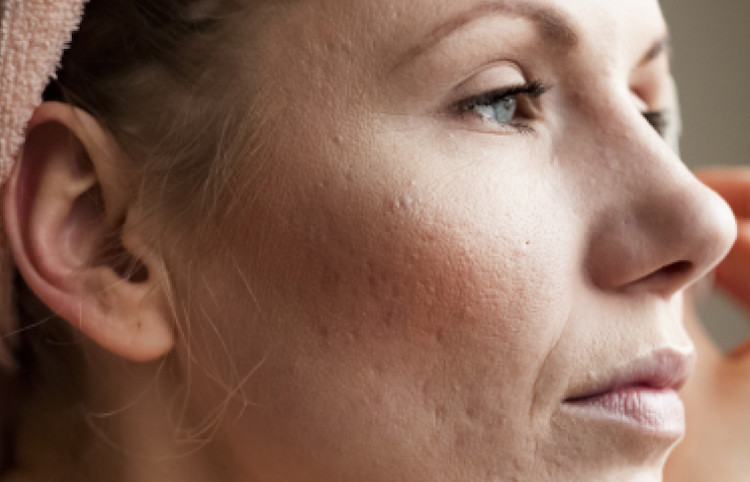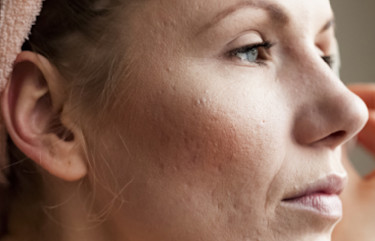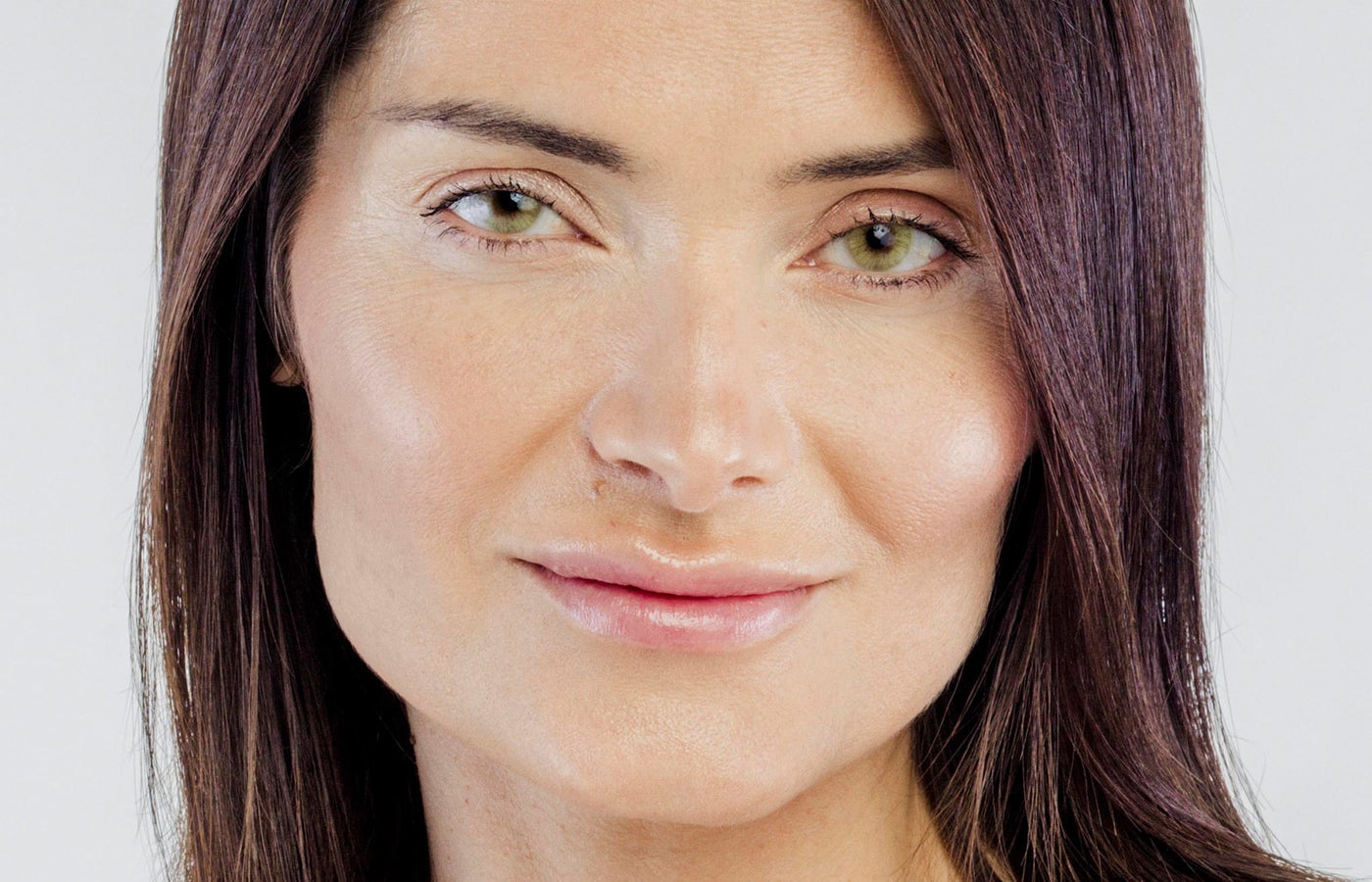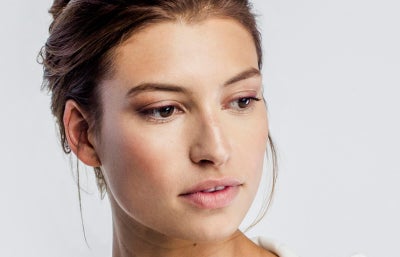Large Pores
Pores are an essential part of our body, but they can be a serious cosmetic concern for many of us—especially when enlarged and clogged with debris. Learn how to minimize the appearance of large pores using RealSelf-approved at-home solutions and in-office treatments.
Pores are an essential part of our body, but they can be a serious cosmetic concern for many of us—especially when enlarged and clogged with debris. Learn how to minimize the appearance of large pores using RealSelf-approved at-home solutions and in-office treatments.
What causes large pores
Can you shrink pores
Top treatments
Skin-care solutions


Pores are small openings in your skin that allow sweat, oils, and other microscopic particles to pass through. They’re found from head to toe, all over your skin.
Through pores, our skin releases sebum, the body’s natural oil. That’s why pores look bigger in oily areas of your face—and why it’s common to have large pores on the nose, for example.
Pore size is mostly determined by genetics, but pores tend to get larger and more noticeable with age, as the collagen required to keep pores tight gradually breaks down.
Over time, skin cell turnover slows and dead skin cells pile up on the skin’s surface. They can collect within pores, expanding them from the inside out.
Pores can also look larger due to these factors:
- Acne, which is caused in part by clogged pores, can make pores both bigger and more noticeable.
- Excess sebum, common for oily skin types, can get trapped within the pore and harden into a sebum plug at the outlet of the pore, potentially leading to acne breakouts.
- Sun damage weakens the skin’s collagen, which serves as its scaffolding. When collagen is damaged or degraded, the walls of your pores can sag, making them look larger.
- Comedogenic makeup can clog pores, stretching them out and making them appear larger even after you exfoliate and clear them out.
Unfortunately, you can’t actually shrink pores. Since there is no muscular attachment to pores, they do not have the ability to open or close.
That being said, when pores are clogged with dead skin cells and excess oil, the pore can become distended and appear larger. When clogged pores are cleared out rather quickly, the pore can look smaller, with skin appearing brighter and smoother overall.
However, if the distended pore is not cleared out sufficiently and is left clogged for long periods of time, the collagen and elastin surrounding the pore begin to break down—and the pore can become overstretched permanently. In fact, a 2016 study in the journal Dermatologic Surgery found that decreased elasticity around pores is one of the top causes of their becoming enlarged.
Even though pores can’t physically shrink, it is possible to minimize their appearance.
New York City dermatologic surgeon Dr. Nelson Lee Novick says that “there is no one perfect treatment for enlarged pores, which is believed to be an inherited—family predisposition—trait.” But certain treatments tend to be more effective than others, depending on your skin type and tone.
- HydraFacial is a multistep facial that uses a patented device to cleanse, exfoliate, clear large pores, deliver a mild peel, and infuse skin with hydrating and anti-aging ingredients. It offers an immediate glow after the treatment, and its extractions can also refine and improve the appearance of pores. “HydraFacial can really help evacuate the dirt and buildup from within the pore that can keep it enlarged, thereby allowing it to shrink down,” says Dr. Audrey Klenke, a plastic surgeon in Bluffton, South Carolina. There’s usually no downtime after a HydraFacial treatment, and the procedure is painless (extractions are done with a vacuum). You’ll need a series of monthly treatments in order to see significant improvements in your skin’s texture. The treatment can also be entirely customized to your skin concerns and goals, but its success is dependent on having a skilled technician. Some RealSelf members who didn’t report experiencing red and blotchy skin afterward. Find doctors who offer HydraFacial
- Chemical peels work by using an acidic solution to remove the top layers of skin and speed up cell turnover. When applied to the face, a chemical peel (often a glycolic acid– or salicylic acid–based peel) will exfoliate and clear out pores by dissolving the bonds between old skin cells, making the complexion look clearer and pores smaller. Downtime post-treatment will depend on the strength of your peel. Light to medium peels will require just a few days of recovery, while deeper peels can take up to two weeks. Results are noticeable once the post-peel symptoms diminish, and they can continue to improve over time. Find doctors who offer chemical peels
- Fractional laser resurfacing “uses tiny columns of a specific laser energy to stimulate the production of healthy collagen in your skin. Rather than damaging the surface of the skin, it sends the laser energy through the skin, to stimulate collagen production without creating significant injury to the skin's surface,” says New York City dermatologic surgeon Dr. Eric Schweiger. “The result is improved skin texture—including smaller pores, since the healthy collagen helps to fill them in.” Non-ablative laser treatments leave the surface skin intact, offering results without significant pain or downtime. However, you may need three to six sessions, over the course of several months, to see an improvement in the size of your pores. Find doctors who offer laser resurfacing
- Microneedling pricks the skin with tiny needles, causing micro injuries that trigger a healing response and spur collagen production. This new collagen can better support the walls around your pores so that they appear tighter and stay clearer. This treatment has a few advantages that make it a great pore minimizer. The procedure is quick, it’s less expensive than many other options, and it offers both short- and long-term benefits for skin. It’s also suitable for all skin tones and types, though people with active skin conditions like acne or eczema should avoid it. However, it can actually damage your skin’s texture if performed by an inexperienced provider or with an at-home device that uses too-large needles. It also requires a series of treatments for best results, and you’ll need maintenance treatments every 6–12 months. Find doctors who offer microneedling
- Vivace is a skin rejuvenation treatment that pairs microneedling with radiofrequency energy in order to stimulate even more collagen and elastin production deep within the skin. This firms up the walls of lax pores, making them appear smaller and less noticeable. “Devices like Vivace penetrate deeply, to help smooth texture and pores,” says Dr. Thomas Griffin Jr., a dermatologist in Plymouth Meeting, Pennsylvania. Vivace also has little to no downtime and tends to be more comfortable than traditional microneedling (with application of a numbing cream). Multiple sessions are needed, and it takes about six months to see the full results. You’ll also need annual follow-up treatments, to maintain them. Find doctors who offer Vivace
- Retin-A is a brand of prescription retinoid that contains tretinoin. Derived from vitamin A, retinoid creams or gels (including over-the-counter retinol products) increase cell turnover and kick-start collagen production in order to brighten, smooth, and firm skin. Prescription-only ingredients, like tretinoin and tazarotene (available in Tazorac), are popular. Both tretinoin and tazarotene prevent the buildup of dead skin cells in the pores that make them look bigger. They can also treat acne, fine lines, and dark spots of hyperpigmentation. “Retin-A can be very irritating, so it’s important to start with a low dosage, such as 0.25%, to avoid irritation,” says New York City dermatologist Dr. Michele Green. Start by applying Retin-A a few days a week and gradually increase use to every night. Use a gentle moisturizer after applying Retin-A, to minimize irritation, and wear SPF 30 sunscreen diligently, since retinoids can cause increased sensitivity to sunlight. Find doctors who offer Retin-A
Related: Nothing Will Permanently Shrink Your Pores, but These Treatments Can Make Them Look Smaller
A skin-care routine for acne-prone skin can help keep pores clear, minimizing how large they look. In particular, regular exfoliation removes the dead skin cells and sebum that could otherwise clog pores and stretch them out, making them look bigger and contributing to blackheads.
Cleansers that provide light exfoliation can help remove debris and unclog pores. Consider washing your skin daily with a chemical exfoliant, such as a salicylic acid or glycolic acid cleanser, to keep pores clear and minimize clogging.
In addition to exfoliating cleansers, you could also use leave-on beta hydroxy acid (BHA) or alpha hydroxy acid (AHA) exfoliating skin-care products such as toners, lotions, and spot treatments. Good options include Obagi Clenziderm M.D. Pore Therapy and ClarityRx Fix It 2% Pore Perfecting Solution, both of which use salicylic acid to cleanse clogged pores.
It’s also important to consider retinol products when looking for ways to exfoliate the skin. Not only will retinol unclog pores by increasing cell turnover, but it will also tackle fine lines and wrinkles. RealSelf members love the Obagi360 Retinol 1.0.
And though it may seem counterintuitive, daily moisturizing actually helps balance the skin’s sebum production, preventing excess oil.
Related: Dermatologists Say It’s OK to Deep Clean Your Pores with These Blackhead Removing Devices
Updated July 6, 2021





